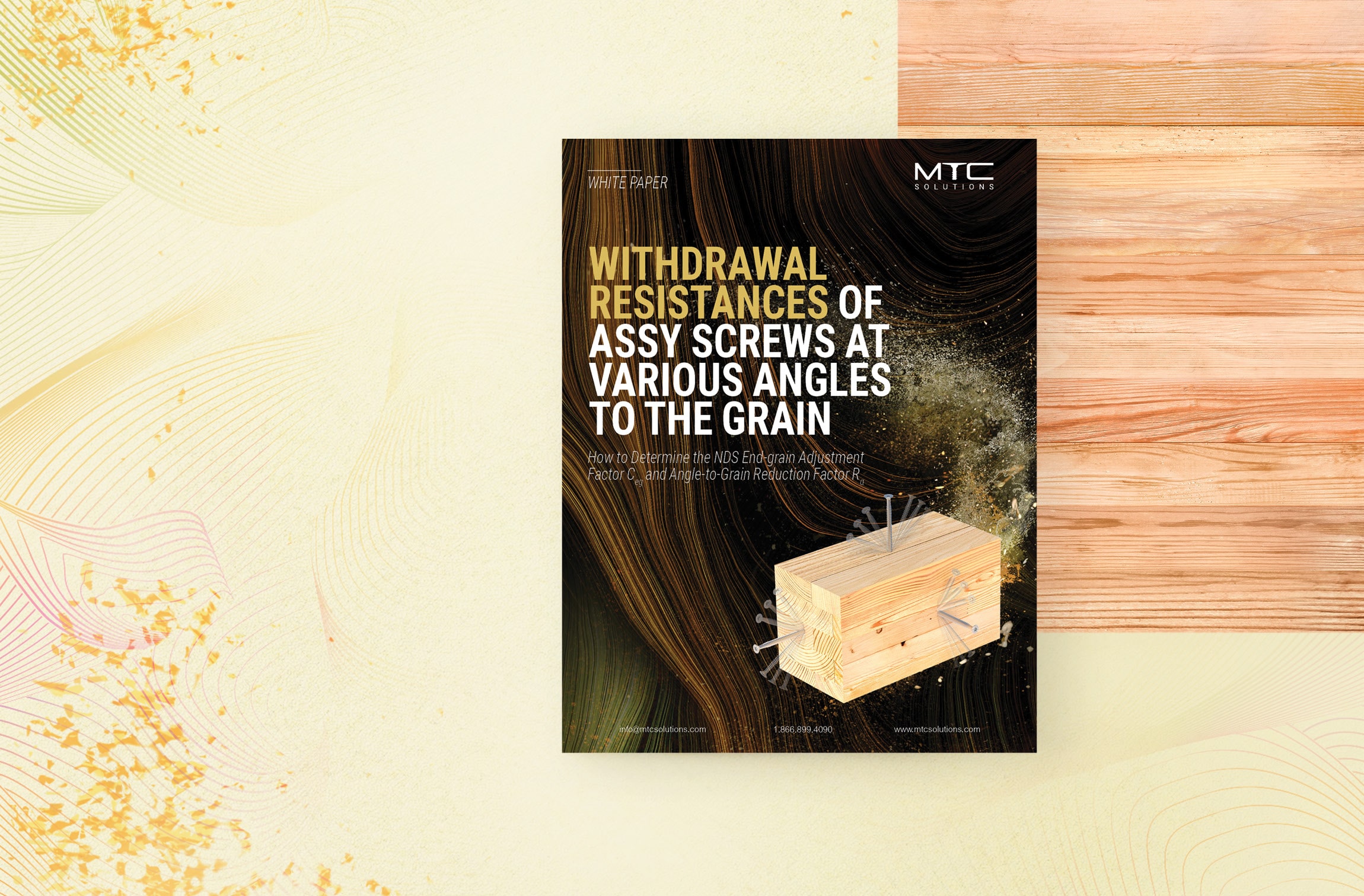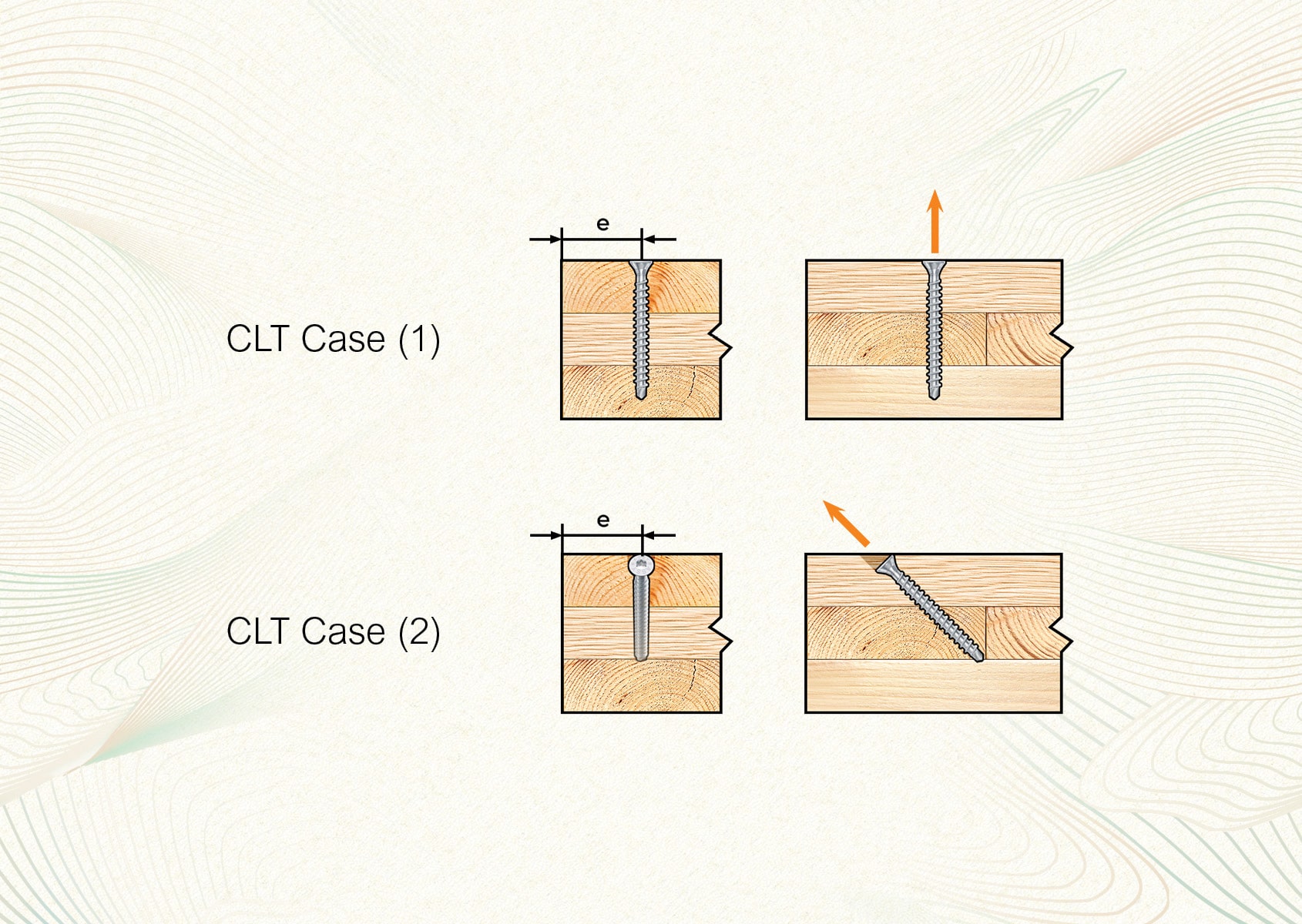
Discover the secret to accurately calculating withdrawal resistance in mass timber connections with MTC Solutions’ ASSY self-tapping screws (STSs). Our comprehensive technical paper delves into the theory, reduction factors, and practical guidance for calculating withdrawal resistance in STS installations. Design engineers often encounter uncertainties surrounding the use of the end-grain adjustment factor, Ceg, and the angle-to-grain reduction factor, Rα. Addressing this lack of clarity, our paper provides valuable insights on applying both factors in end-grain applications, including glulam beams and columns, as well as CLT panels.
One common question from engineers is whether both the reduction and adjustment factors should be applied. Our paper clarifies that both the Ceg and Rα factors are crucial in ensuring accurate withdrawal resistance calculations. While the Ceg factor provided in NDS 2018 covers parallel- and perpendicular-to-grain applications, it falls short when STSs are installed at varying angles to the grain. To bridge this gap, the MTC Solutions Structural Screw Catalog offers an angle-to-grain reduction factor, Rα, designed to address withdrawal applications across a full range of values from 0° to 90°.

You’ll also find practical examples that showcase the application of these two factors, which can help with the interpretation of code provisions intended for lag screws in the design of connections with STSs in withdrawal.
Register for a Technical Learning Session
Sign up for MTC Newsletter and keep up to date with all our progress.